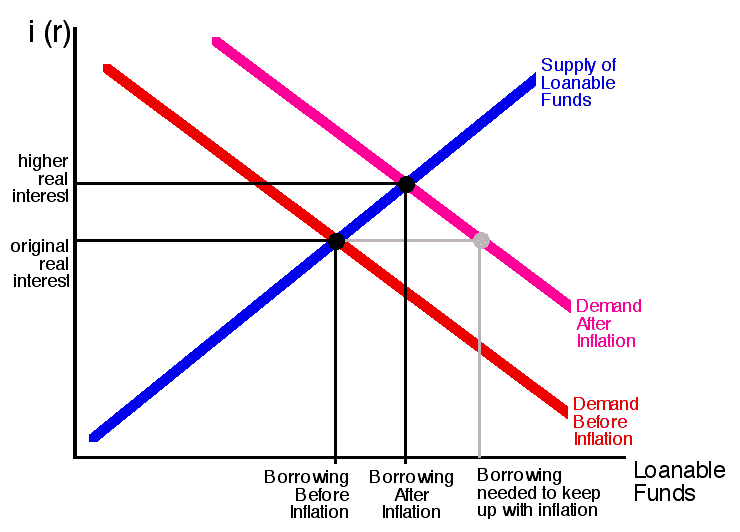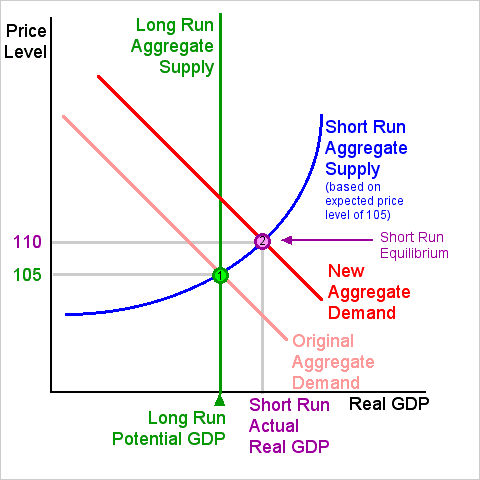Interest Rate Effect on Aggregate Demand
Post on: 16 Март, 2015 No Comment

Identification
Aggregate demand is a macroeconomic term referring to the total goods and services in an economy at a particular price level. Plotting these two on a graph produces what’s called an aggregate demand curve, reflecting the fact that prices and demand are subject to change. The AD curve has a downward slope, because as prices rise, demand for goods and services decreases. Interest rates represent the cost of money, and therefore have an effect on prices and aggregate demand.
Effects
Changes in interest rates can affect several components of the AD equation. The most immediate effect is usually on capital investment. When interest rates rise, the increased cost of borrowing tends to reduce capital investment and, as a result, total aggregate demand decreases. Conversely, lower rates tend to stimulate capital investment and increase aggregate demand.
Function
Changes in the interest rate can also have a profound effect on consumer spending. Most people borrow money to buy things such as houses and cars, and a higher interest rate increases the total cost of the purchase (price), and therefore can reduce the total amount of such borrowing and spending. Consumer spending is the largest component of aggregate demand in the United States, so fluctuations can have a large effect on the overall economy.
Significance
References
More Like This
How Do Interest Rates Affect the Economy?
The Effect of Real GDP on Interest Rate
How Does an Increase in Wages Affect Aggregate Supply?
You May Also Like

Interest rates affect the way that the economy functions. In short, the higher the interest rate, the fewer planned investments that will.
When a unit of currency is able to purchase less than it could in the past, the value of the currency is.
Aggregate interest rates take into account the impact of compounding. Interest Rate Effect on Aggregate Demand. Macroeconomics deals with the big.
Interest Rate Effect on Aggregate Demand. Macroeconomics deals with the big picture. Supply and demand are familiar terms to many.
Interest Rate Effect on Aggregate Demand. Macroeconomics deals with the big picture. Supply and demand are familiar terms to many.
How Do Income Taxes Affect Aggregate Demand. Effective Interest Rates; How Do Income Taxes Affect Aggregate Demand? X. Must See: Slide.
The Effects of Tax Cuts on Aggregate Demand & Aggregate Supply; How Does a Change in Supply Affect Demand. How Do.
Reduced borrowing will generally lead to a decrease in aggregate expenditure. Lower interest rates result in higher. How Do Income Taxes.
How Does an Increase in Wages Affect Aggregate. Supply & Demand Affect the. as a time when the unemployment rate.














